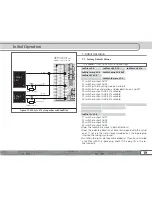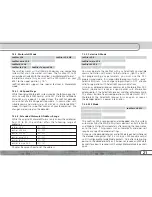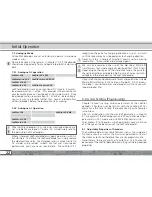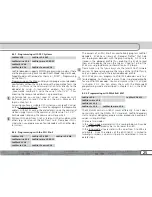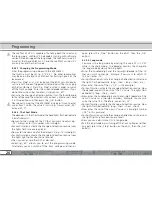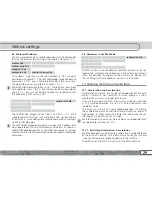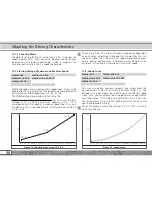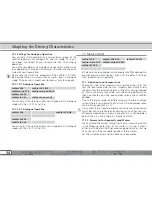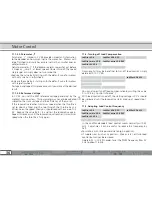
23
There is at least one memory space within the decoder reserved
for each adjustable parameter where numbers or letters can be
stored.
You could visualize the storage spaces as index cards in a large
file box. In order to enable you to find the right card again, they
all have numbers and / or names outlining the properties of this
particular card such as „locomotive address“ or „maximum
speed.“
Then imagine that you can write information onto these cards.
Adjusting the settings means nothing else but erasing one entry
and replacing it with another. Moreover, you could do that at
any time. However, you cannot write onto every card: some bits
of information like the manufacturer’s code are firmly encoded.
Thus, you can determine the content of the storage spaces in
the decoder even during operation and of course, the decoder
will follow the instructions. Via the procedure known as
„Programming,“ you can enter the desired data into the storage
spaces.
The philosophy regarding the structure of and access to these
storage spaces in the decoder varies greatly between
manufacturers. While most LokPilot decoders utilise the CV
concept as outlined in chapter 8.1.1., Märklin® applies a diffe-
rent concept with M4 that is illustrated in chapter 8.1.2.
8.1.1. Configuration Variables (CVs)
LokPilot V3.0
LokPilot V3.0 DCC
LokPilot micro V3.0
LokPilot micro V3.0 DCC
LokPilot XL V3.0
LokPilot Fx V3.0
LokPilot Fx micro V3.0
Almost all 8.1.1. Configuration Variables (CVs) LokPilot decoders
follow the CV concept developed in the US. CV stands for
„Configuration Variable“ and indicates that the storage cells
described above are not only variable but they also determine
the behaviour of the decoder.
8.1.1.1. Standardisation in the NMRA
The NMRA (National Model Railroad Association) has defined
which CVs determine certain parameters of a decoder. The DCC
standard allocates fixed numbers for certain CVs (adherence is
obligatory). This greatly simplifies things for the user since
decoders of most manufacturers comply with this standard and
therefore dealing with CVs requires the same process with the
same CV-numbers regardless of the manufacturer.
The DCC concept permits to enter numbers ranging from 0 to
255 into CVs. Each CV carries only one number.
While the position number is predetermined, the range of values
may vary. Not all CVs must accept values ranging from 0 to 255.
The permitted values for LokPilot decoders are listed in the table
in chapter 20.1. showing all available CVs.
8.1.1.2. Bits and Bytes
Most CVs contain numbers: CV 1 for instance contains the
locomotive address. This can be any number between 1 and 127.
While most CVs expect numbers to be entered, some others are
rather like a „collection point“ of various „switches“, that
administer different functions in one CV (mainly „on“ or „off):
CVs 29 and 49 are good examples: you must calculate the value
for these CVs yourself. The value depends on which settings you
want to program:
Have a look at the explanations for CV 29 in the table in chapter
20.1.: firstly, decide which options should be active. The column
„Value“ has two numbers for each option. If the option is
switched off, the value is 0. Otherwise, it is a number between 1
and 128.
Add all the values for the respective options to arrive at the correct
value for this CV.
Programming
Summary of Contents for LokPilot Fx micro V3.0
Page 69: ...69 For your personal notes ...











